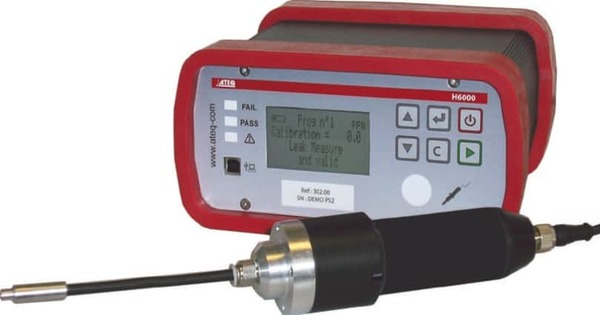Hydrogen leak testing is a critical method for detecting and measuring leaks in systems or equipment that handle hydrogen gas. It is the standard method of inspecting a hydrogen pressure vessel or installation for leaks or faults. It is especially essential because hydrogen is very combustible and can produce explosive combinations in the air at certain amounts. This often entails injecting hydrogen as a tracer gas into the device being tested, with any leaking gas detected using hydrogen sensors. Several test mechanisms have been developed. Detecting leaks early protects safety and avoids potential mishaps.
Preparation
Before conducting the test, ensure that the system or equipment is properly prepared. This may involve purging the system with inert gas, ensuring that it’s clean and free of any debris or contaminants that could interfere with the testing process.
Testing Procedure
Follow the chosen testing method carefully, applying the appropriate techniques and equipment. Pay close attention to potential leak points such as fittings, seals, valves, connections, and welds.
Test mechanisms
- Hydrostatic test
In the hydrostatic test, a vessel is filled with a nearly incompressible liquid – usually water or oil – and examined for leaks or permanent changes in shape. The test pressure is always considerably higher than the operating pressure to give a margin for safety, typically 150% of the operating pressure.
- Burst test
In the burst test, a vessel is filled with a gas and tested for leaks. The test pressure is always considerably more than the operating pressure to give a margin for safety, typically 200% or more of the operating pressure.
- Helium leak test
Helium (the lightest inert gas) is used as a tracer gas in the helium leak test, and it may detect concentrations as low as one part in ten million. Helium was chosen primarily because it easily penetrates small leaks, is inert, and will not react with the test piece, while also having a naturally low concentration in air, making detection easier. Leaks as small as 5×10−10 Pa•m3/s can be detected in vacuum mode, while newer digital machines can detect 5×10−10 Pa•m3/s in sniffing mode.
- Vacuum test
An external pump linked to the instrument is typically used to produce a vacuum inside the object. Alternatively, helium can be injected into the product while it is encased in a vacuum chamber linked to the device.
Documentation
Keep detailed records of the testing procedure, including the methods used, results obtained, fixes done, and the date of testing. This paperwork is critical for regulatory compliance and continuous maintenance.
Overall, hydrogen leak testing should be done on a frequent basis, particularly in essential applications like hydrogen storage facilities, fuel cell systems, hydrogen pipelines, and hydrogen-powered cars, to assure safety and avoid accidents.
















